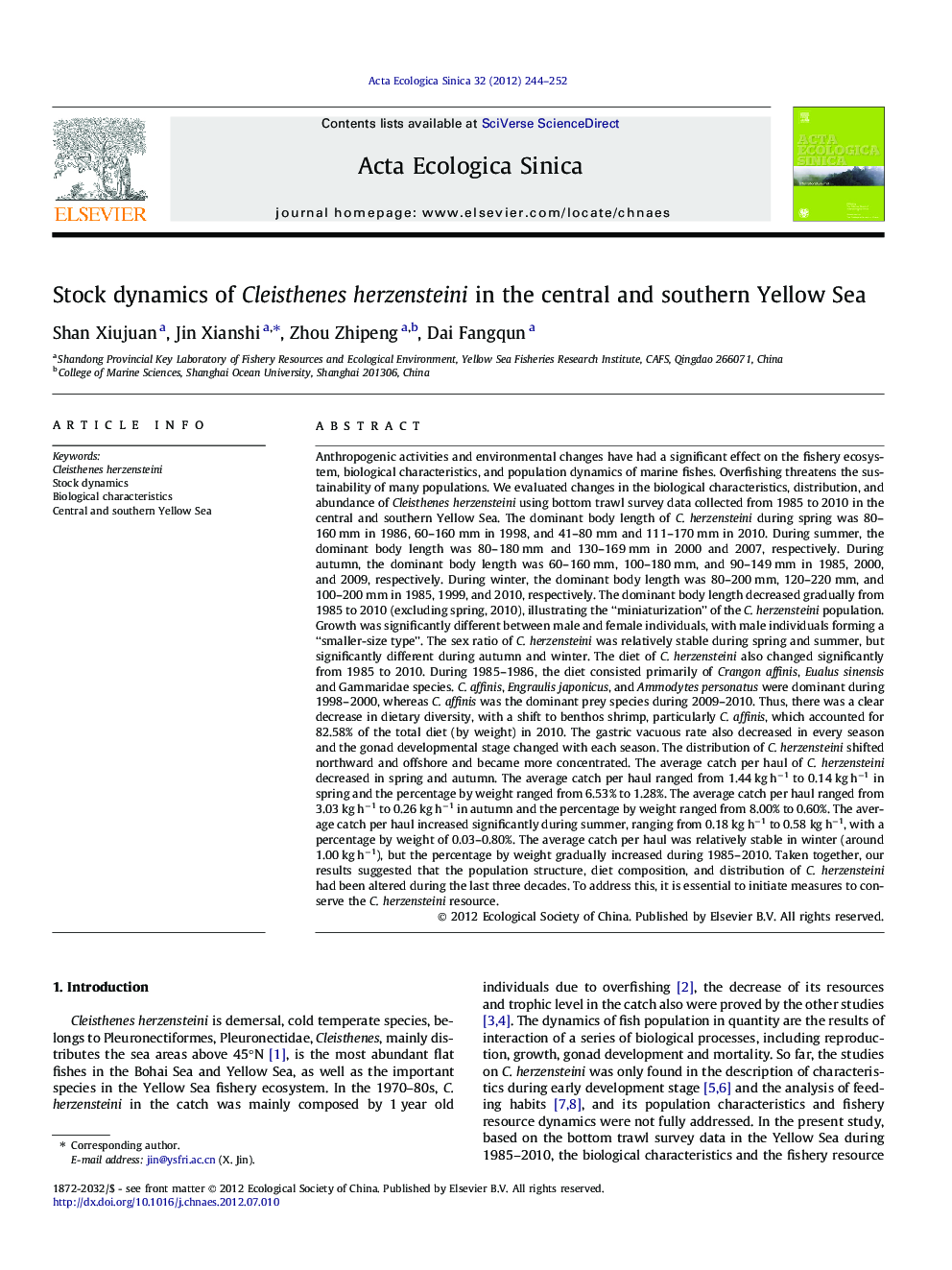| Article ID | Journal | Published Year | Pages | File Type |
|---|---|---|---|---|
| 4380047 | Acta Ecologica Sinica | 2012 | 9 Pages |
Anthropogenic activities and environmental changes have had a significant effect on the fishery ecosystem, biological characteristics, and population dynamics of marine fishes. Overfishing threatens the sustainability of many populations. We evaluated changes in the biological characteristics, distribution, and abundance of Cleisthenes herzensteini using bottom trawl survey data collected from 1985 to 2010 in the central and southern Yellow Sea. The dominant body length of C. herzensteini during spring was 80–160 mm in 1986, 60–160 mm in 1998, and 41–80 mm and 111–170 mm in 2010. During summer, the dominant body length was 80–180 mm and 130–169 mm in 2000 and 2007, respectively. During autumn, the dominant body length was 60–160 mm, 100–180 mm, and 90–149 mm in 1985, 2000, and 2009, respectively. During winter, the dominant body length was 80–200 mm, 120–220 mm, and 100–200 mm in 1985, 1999, and 2010, respectively. The dominant body length decreased gradually from 1985 to 2010 (excluding spring, 2010), illustrating the “miniaturization” of the C. herzensteini population. Growth was significantly different between male and female individuals, with male individuals forming a “smaller-size type”. The sex ratio of C. herzensteini was relatively stable during spring and summer, but significantly different during autumn and winter. The diet of C. herzensteini also changed significantly from 1985 to 2010. During 1985–1986, the diet consisted primarily of Crangon affinis, Eualus sinensis and Gammaridae species. C. affinis, Engraulis japonicus, and Ammodytes personatus were dominant during 1998–2000, whereas C. affinis was the dominant prey species during 2009–2010. Thus, there was a clear decrease in dietary diversity, with a shift to benthos shrimp, particularly C. affinis, which accounted for 82.58% of the total diet (by weight) in 2010. The gastric vacuous rate also decreased in every season and the gonad developmental stage changed with each season. The distribution of C. herzensteini shifted northward and offshore and became more concentrated. The average catch per haul of C. herzensteini decreased in spring and autumn. The average catch per haul ranged from 1.44 kg h−1 to 0.14 kg h−1 in spring and the percentage by weight ranged from 6.53% to 1.28%. The average catch per haul ranged from 3.03 kg h−1 to 0.26 kg h−1 in autumn and the percentage by weight ranged from 8.00% to 0.60%. The average catch per haul increased significantly during summer, ranging from 0.18 kg h−1 to 0.58 kg h−1, with a percentage by weight of 0.03–0.80%. The average catch per haul was relatively stable in winter (around 1.00 kg h−1), but the percentage by weight gradually increased during 1985–2010. Taken together, our results suggested that the population structure, diet composition, and distribution of C. herzensteini had been altered during the last three decades. To address this, it is essential to initiate measures to conserve the C. herzensteini resource.
